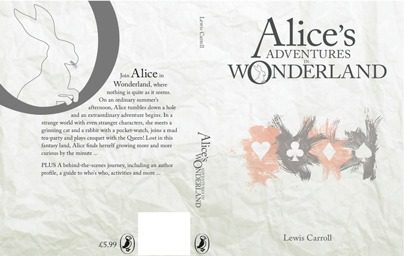In this 2 part series I'll be giving using Lewis Carroll's story "Alice's Adventures in Wonderland" to help you understand where your clients (the Alice's) are coming from.
Part 1 - Alice's struggle with her physical self.
A recurring theme in Carroll's story is Alice's struggle with her physical size. She feels a variety of emotions throughout the book ranging from discomfort, frustration, sadness and eventually acceptance.
In Chapter 1 - Down the Rabbit Hole Alice find a door to the garden only to realize that she's too big to fit through. After drinking to become small she realizes that she's left the key to the door on the table. At that point Alice eats the cake and grows too large to fit through the door. She then begins to question her identity
I'm sure I'm not Ada,' she said, ' for her hair goes in such long ringlets, and mine doesn't go in ringlets at all; and I'm sure I can't be Mabel, for I know all sorts or things, and she, oh! Besides, she's she, and I'm I, and - oh dear, how puzzling it all is!.."
Alice, like most clients, has identity issues that stem from body awareness. Often our clients feel trapped in their bodies irrelevant of whether they feel they are too big or too small.
To make matters worse. The White rabbit returns and mentions how terrible it would be to keep the Duchess waiting. Alice, so frustrated that she'd reach out to anyone at this point, attempts to ask the White Rabbit for help. The Rabbit violently turns and scurries away.
Early one clients might be trying to reach out to you in their quest to gain comfort with their physical selves. Don't be a White Rabbit and run away. Be that caring / compassionate friend and reach out.
Perhaps the most well known scene in Alice's Adventures in Wonderland is her interaction with the Caterpillar. This scene is where Alice's identity crisis hits rock bottom. It is also where she starts to gain some control over her physical well being.
'But, I'm Not a serpant, I tell you!'said Alice, 'I'm a - I'm a ' ... 'I-I'm a little girl,' said Alice ... 'A likely story indeed!' said the Pigeon
At this point Alice is so disillusioned that she allows the pigeon to make her believe that she's a serpent.
Our clients minds are vulnerable in the intermediate stage of our training and the media can act as the pigeon. All it takes is one fitness magazine to alter our clients mindset and disillusion them.
By the end of the chapter Alice starts to gain some control of her physical size by figuring out how to use the mushroom effectively.
It's your job to get your clients to this point as quickly as possible. By encouraging them to take control of their diet and nutrition they can gain control of their physical size and accept that minor changes can happen from time to time.
Alice finally accepts her size and gains understanding of her physical (and mental) self in the final chapter. The other characters again try to confuse Alice based on her size:
At this moment the King, who had been for some time busily writing in his note-book, called out 'Silence' and read out from his book, 'Rule Forty-two, All persons more than a mile high to leave the court.'... 'Well, I shan't go, at any rate,' said Alice: 'besides, that's not a regular rule: you invented it just now.'
After some back and forth the Queen orders that Alice's head come off to which Alice replies
'You're nothing but a pack of cards!'
In this one intense statement Alice shows that she's fed with up with the non-sensical Wonderland. After swatting away the cards she returns to the riverbank scene with her sister where the story began as a more mature women.











